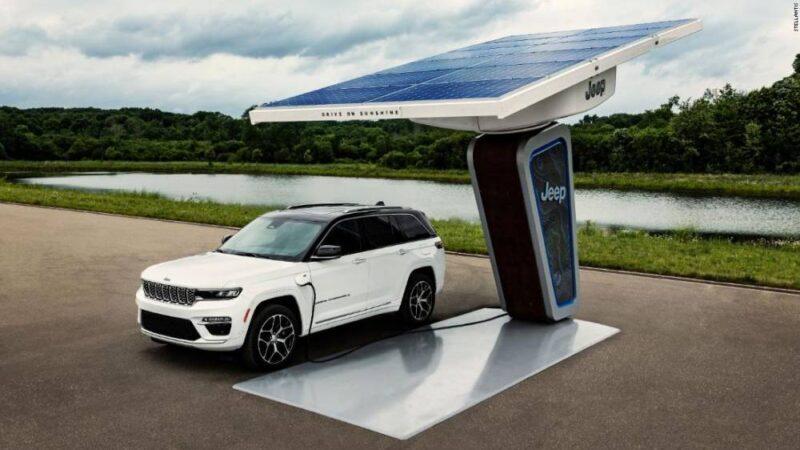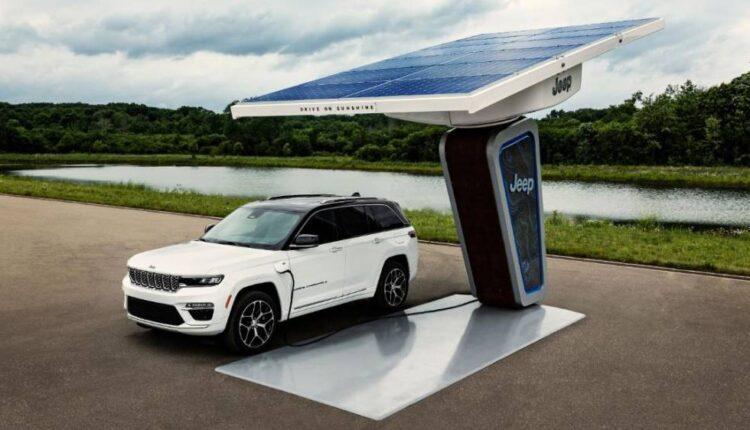(CNN)President Joe Biden announced an agreement Thursday that aims to push the US auto industry to sell more electric vehicles. The goals include a “shared aspiration” that 40% to 50% of vehicles sold in the US will be electric, plug-in hybrids or hydrogen-powered.
This will be a challenge, some experts say, but isn’t really as hard as it might seem. Battery-powered vehicle sales, including both all-electric and plug-in hybrids, are expected to make up just 4.3% of all vehicles sold in the US this year, according to IHS Markit.

Biden announces new emissions standards, target that 50% of vehicles sold in US by 2030 are electricGeneral Motors (GM) said months ago it hopes to sell only zero-emission vehicles, including electric and hydrogen-powered, by 2035. It could be expected, then, that at least 40% of its vehicle sales should be emissions-free by 2030. Stellantis, the company that owns the Dodge, Chrysler and Jeep brands, also recently said it planned for 40% of its US sales to be either electric or plug-in hybrid by the end of 2025, well ahead of the goal set by the Biden administration. Ford has also already announced that 40% of the vehicles it sells globally will be electric by 2030.
Automakers have been setting these goals for a number of reasons. Regulations are already changing in other parts of the world, such as in Europe, where there are plans to ban internal combustion vehicles by 2035. Consumer tastes are also changing — as the increasing popularity of Tesla (TSLA) has shown, said Jessica Caldwell, an industry analyst with Edmunds.
“No one really wants to be seen as the holdout or the dinosaur, the one that’s fighting this progress,” she said.Read MoreAs it is, 32% of all US cars sold in 2030 are expected to be fully electric, according to a June 2021 forecast by IHS Markit. Another 4.2% are expected to be plug-in hybrids.”So, there’s work to do,” said Lea Malloy, a mobility analyst with Cox Automotive. She noted a number of areas, such electric car charging infrastructure and more public education about EVs, could use help.The government has already done a good bit to push EV sales, said Derek Jones, director for mobility solutions at the consulting company Guidehouse.Besides including increased spending on electric vehicle charging stations in a proposed infrastructure bill, the Biden administration also announced a commitment to purchase electric vehicles for government fleets. The government maintains large fleets of cars and trucks and that kind of commitment, on its own, can help provide confidence in automakers, said Jones, who said he has been working with the government on those plans.

Europe aims to kill gasoline and diesel cars by 2035Still, the announced goals are far from a firm commitment. In a joint statement from various automakers, it was referred to as an “aspiration.” And there will be no penalties incurred if the goal is not achieved.
Second, the term “electric” here does not mean only fully battery electric vehicles. The term “electric vehicles,” as defined by the Biden administration, also includes plug-in hybrid models. Plug-in hybrids have powerful batteries and electric motors but also have gasoline engines. With fully charged batteries, they can travel a relatively short distance — usually between 15 and 30 miles — on electric power before the gasoline engine has to come on to power further driving. Plug-in hybrids are expected to remain a small part of overall plug-in vehicle sales, as they are today, said Jones. Still, having them in the mix makes it easier to attract consumers who might be uneasy committing to driving on battery power alone.
Source: edition.cnn.com

